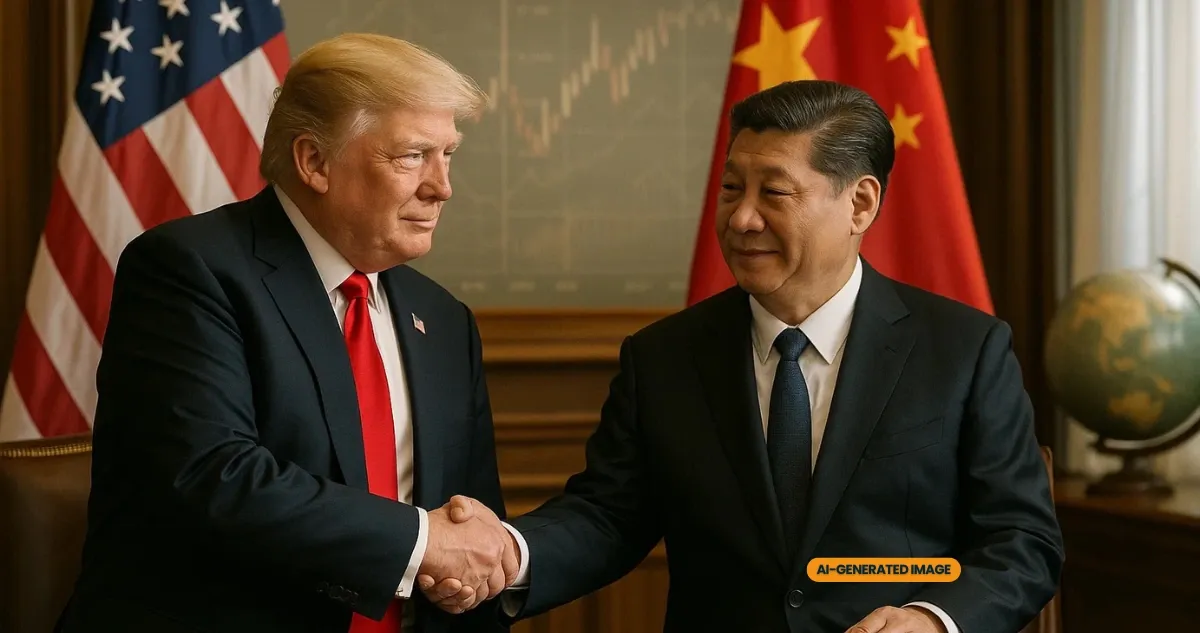
Trump and Xi sign historic US-China agreement: markets soar
The de-escalation agreement between the US and China provides for a 10% reduction on duties in November 2025 and the purchase of 25 million tonnes of soya beans per year until 2028. Benefits for agriculture and crypto.




In a momentous shift for global markets, President Donald Trump has secured a far-reaching trade deal between the US and China.
The understanding reached with Chinese President Xi Jinping has de-escalated tensions between the world's two largest economies, ending a long cycle of retaliatory measures that had dampened growth and sowed uncertainty.
According to the official White House fact sheet, China has pledged to suspend new export controls on rare earths and critical minerals, essential elements for the consumer electronics and electric vehicle sectors.
Beijing also pledged to stop the flow of fentanyl precursors to the US and remove all retaliatory duties and non-tariff measures implemented as of 4 March 2025.
On the US side, the agreement includes a 10 per cent reduction on duties on Chinese imports, to take effect as of 10 November 2025, along with a number of extensions for key Section 301 tariff exclusions.
The US will also suspend implementation of trade actions related to the ongoing maritime and logistics investigations for one year, a gesture aimed at building mutual trust.
A crucial pillar of the agreement is the Chinese commitment to purchase US agricultural products. The understanding guarantees the purchase of at least 12 million metric tons of US soybeans by the end of the year and no less than 25 million metric tons annually until 2028.
Impact on Markets: Agriculture, Semiconductors and Cryptocurrencies
This landmark agreement effectively restores trade relations, eliminating a spiral of retaliatory measures that weighed on corporate profits and the supply chain.
The immediate beneficiaries include US agriculture, semiconductor manufacturing and the critical minerals industry.
Financial analysts suggest that risky assets, such as equities, technology stocks and digital assets, could benefit from a renewed sense of stability.
Crypto markets, which have recently shown a lag in risk-on sentiment, could see a pick-up in institutional flows as regulatory and trade uncertainty dissipates.
Improved US-China relations are set to facilitate cross-border trade for US-listed crypto companies, reducing headline-driven volatility.
The removal of tariff barriers and restrictions on technology exports is seen as bullish for institutional portfolios, and cryptocurrencies are becoming a key pillar in this context.
If confidence were to spread across asset classes, renewed momentum is expected for Bitcoin, Ethereum and for tokenized commodities that depend on global supply chains.
What for investors had been the worst bull cycle ever could find a breath of fresh air. For now, markets and political observers will closely monitor the implementation of the commitments made.
Read Next
HashKey aims for $215m in Hong Kong IPO, targets institutional capital
HashKey opens IPO subscriptions in Hong Kong, seeking $215 million ahead of its 17 December stock market debut.
Japan: high taxes curb crypto investments
In Japan, the main obstacle to the growth of the crypto market is not volatility, but taxes and tax complexity that discourage investors.
South Korea: mandatory liability for crypto exchanges
South Korea introduces strict liability for exchanges after the $28 million hack on Upbit: damages without proof of negligence.
Robinhood targets Indonesia with double acquisition
Robinhood enters the Indonesian market with two strategic acquisitions in brokerage and crypto, targeting 36 million potential investors.